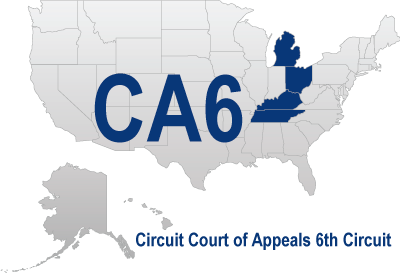Hammond v. County of Oakland, 2020 U.S. App. LEXIS 28285 (9th Cir. Sept. 4, 2020)
A police dog bit plaintiff while he was handcuffed and on the ground. That’s excessive force if a jury believes it was gratuitous. Qualified immunity denied. Hammond v. County of Oakland, 2020 U.S. App. LEXIS 28285 (9th Cir. Sept. 4, 2020):
The next segment came when Cadotte ordered Odin to bite Hammond after the deputies had handcuffed him. We have held that police violate the Fourth Amendment when they order a dog to bite a suspect who posed no threat to the officers’ safety and was not resisting arrest or attempting to flee. See Campbell v. City of Springboro, 700 F.3d 779, 787-89 (6th Cir. 2012). Here, after the deputies handcuffed Hammond, he was on his stomach, handcuffed, with his hands visible. Although he had refused to surrender his hands earlier, at that point the deputies could see that Hammond was unarmed. And Hammond says he did nothing after the deputies handcuffed him that could be interpreted as resistance. Yet after Cadotte gave Odin commands in a foreign language, the dog bit Hammond, first on his back and then on his leg and foot. Hammond could “hear [his] bones crackling in [his] head,” and despite his pleas for help Cadotte did nothing to stop the dog from doing “what it wanted to do[.]” A jury could therefore find that Cadotte used excessive force when he ordered Odin to bite a handcuffed suspect who was not resisting arrest. See id.
Cadotte argues that Odin’s bites came as a result of a “spontaneous response” to Hammond’s “‘threatening’ movement into the dog’s defensive perimeter.” Dunigan v. Noble, 390 F.3d 486, 493 (6th Cir. 2004). Dog bites violate the Fourth Amendment only if they come “through means intentionally applied.” Id.; see also Ashford v. Raby, 951 F.3d 798, 802-03 (6th Cir. 2020). Cadotte says that Odin bit Hammond’s legs and feet only after Hammond “began flailing . . . and kicked toward Odin’s face,” but Hammond tells a different story. He insists that these bites—and Cadotte’s commands to instigate them—came after the deputies had handcuffed him and had pinned his legs down. Whether Hammond kicked toward Odin, as Cadotte claims, is thus a question of fact that we lack jurisdiction to consider. See Walker, 649 F.3d at 503.
Cadotte also argues that the law about the use of dogs was not clearly established at the time of this incident. But we have found a Fourth Amendment violation when “an inadequately trained canine” bit a handcuffed suspect. Campbell, 700 F.3d at 789. Here, as there, Cadotte ordered Odin to bite a suspect “who [was] not actively fleeing and who, because of proximity, showed no ability to evade police custody.” Id. Any reasonable officer would have understood that commanding a dog to bite a handcuffed suspect who was not attempting to flee would violate the Fourth Amendment. Cadotte thus is not entitled to qualified immunity with respect to the bites.
Hammond also claims that Deputies Salyers and Welch violated the Fourth Amendment when they failed to stop the bites. Whether they did depends upon whether they “had both the opportunity and the means to prevent the harm from occurring.” Burgess v. Fischer, 735 F.3d 462, 475 (6th Cir. 2013). But Hammond cites no caselaw clearly establishing that officers who are not trained as dog handlers have a duty to intervene and control a dog notwithstanding the presence of the dog’s handler. Salyers and Welch are therefore entitled to qualified immunity from Hammond’s claim.




